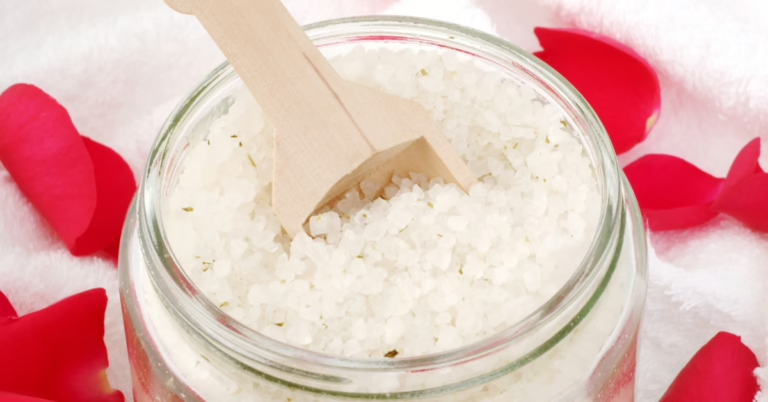6 SPF Moisturizers vs. Dedicated Sunscreens

Are You Only Half‑Protected?
The alarm rings, you down a quick chai, swipe on your favourite SPF‑15 tinted moisturiser and rush to work. Job done, right? Not quite. Between April and June, UV‑Index values in Indian metros hover in the 8 to 13 range—classified as “Very High” to “Extreme”—meaning unprotected skin can start to burn in as little as 15 minutes. If you depend solely on a light layer of SPF moisturiser, you may be gambling with premature ageing, pigmentation, and even increased risk of skin cancer.
Yet you’re busy—you want the quickest path to sun safety without needing to decode chemistry. This guide skips the fluff and gives you six evidence-based truths through an India-specific lens, with simple steps you can start today. By the end, you’ll know when an SPF moisturiser is helpful, when a dedicated sunscreen becomes essential, and how to build a no-fuss routine that works from Goa beaches to Gurugram boardrooms.
30-Second Takeaway
- You’re probably using too little product.
- Most moisturisers don’t offer full-spectrum protection.
- Sweat and humidity reduce their staying power.
- Make-up can interfere with coverage.
- Your skin type matters.
Sunscreens usually cost less per hour of protection.
The Dose Dilemma: Quantity Matters More Than You Think
SPF ratings are based on applying 2 milligrams of product per square centimetre of skin—about a quarter teaspoon for your face and neck. In reality, most people apply one-fourth of that, just enough to feel “non-greasy.” That’s why an SPF 50 moisturiser often performs like SPF 12 in daily life.
Moisturisers, designed to spread easily, thin out too much to offer solid protection. To match lab-tested results, you’d need two full finger-lengths of moisturiser—far more than most people use.
Fix It Now
Use the two-finger rule: squeeze product along your index and middle finger. Apply evenly to your face and neck. If your moisturiser feels too heavy in that amount, switch to a lightweight sunscreen gel meant for generous use.
Action Tip – Measure Your Application
Stand 20 cm from a mirror. Apply two finger-lengths of product and wait 60 seconds. If your skin feels too shiny, gently blot with a tissue—this removes oil, not the sun filters.

Filter Mix: SPF Doesn’t Always Mean Broad-Spectrum
An SPF label only indicates UVB protection—the rays responsible for sunburn. UVA rays, which cause ageing and pigmentation, are shown separately in India using a PA+ to PA++++ scale. Most moisturisers either skip this or meet just the minimum PA+ level.
Common moisturisers contain Ethylhexyl Methoxycinnamate (blocks UVB) and a small amount of Titanium Dioxide (partial UVA coverage). By contrast, modern sunscreens use advanced ingredients like Tinosorb S and Uvinul A Plus, which offer better UVA protection.
What This Means For You
UVA rays can pass through windows, affecting you during long commutes or even while working near a sunny balcony. If pigmentation or melasma is a concern, use a dedicated sunscreen with PA++++ or high zinc oxide content.
Longevity and Sweat Resistance
Take a typical May day in Mumbai: 32°C, 75% humidity, and a UV Index of 11. Even the most “matte” moisturisers can’t hold up well. Indian sunscreen regulations allow labels like “Water-Resistant (40 minutes)” or “Very Water-Resistant (80 minutes),” but few day creams qualify.
Dedicated sunscreens include film-forming agents such as Acrylates Copolymer that help them stay on even when you sweat.
Re-Application Reality
While dermatologists recommend reapplying every two hours, it’s not always realistic to cleanse and reapply from scratch. Keep portable sunscreen sticks or powders in your bag—they work over make-up and are quick to use.
Real-Life Example – Mumbai Commute
You board the local train at Dadar, standing near an open door. After 30 minutes of sweat and pollution, half your moisturiser layer has faded. A water-resistant SPF 50 gel reapplied at the office washroom can keep you protected through evening meetings.

Make-Up Compatibility
Mixing a silicone-rich primer or foundation with a heavy moisturiser often causes pilling—those tiny flakes that roll off your skin. Modern sunscreens dry quickly and create a smooth base for make-up.
Tips for Indian Skin Tones
Avoid high-zinc mineral sunscreens if they leave a white cast. Try tinted or gel-to-water formulas, especially Korean sunscreens that absorb quickly.
Try This – Sandwich Method
- Apply a hydrating serum (optional)
- Use a pea-sized amount of moisturiser and wait 30 seconds
- Apply two finger-lengths of sunscreen and press into skin gently
- Use a damp beauty sponge to lightly apply foundation or compact powder

Match Texture to Skin Type
For oily or acne-prone skin, use water-based gels that absorb in 30 seconds and contain silica microspheres to control oil.
For dry or dehydrated skin, pair a barrier-repair cream (with ceramides or panthenol) with a sunscreen that contains glycerin or squalane.
For sensitive skin, fragrance-free mineral sunscreens using Zinc Oxide and Titanium Dioxide reduce the chance of stinging. Always patch-test for three days before full use.
For those with pigmentation issues, PA++++ sunscreens plus a Vitamin C serum in the morning can enhance protection.
Pro Tip Choose by concern:
- Oily skin: Gel texture, matte finish, with Tinosorb S
- Dry skin: Cream texture, dewy finish, with Uvinul T 150
- Sensitive skin: Lotion texture, soft-matte finish, with Zinc Oxide
Cost-per-Protection Hour
At first glance, a ₹999 SPF moisturiser and a ₹699 sunscreen might seem comparable. But you use twice as much sunscreen by volume. Let’s compare:
If a 50 ml SPF moisturiser gives 25 uses, that’s ₹40 per use. If it lasts 1.5 hours, that’s ₹26.7 per protected hour.
A ₹699 sunscreen of the same size also gives 25 uses, at ₹28 per use. If it protects for 2 hours, the cost is just ₹14 per hour.
Bottom Line
A dedicated sunscreen can cost half as much per hour while giving better coverage and longer wear time.

Savings Challenge
Take your current product. Divide the price by 25 (if it’s 50 ml), then divide again by how long it realistically protects you. Share your “cost-per-hour” in the comments and discover the smartest buys.
Your 30‑Second Game Plan
- Keep moisturiser for hydration, not UV defence—unless you use enough and reapply often
- Look for PA++++ or zinc oxide to counter India’s UVA-heavy sun
- Match your sunscreen texture to your skin type
- Reapply smartly—use sticks or powders on top of make-up
- Check the cost per hour—you may save money and your skin by switching
Ready to level up? Try our 7-Day Sunscreen Swap Challenge. Replace your moisturiser-only routine for one week. Note changes in your skin and wallet. Share your experience with a cost-per-hour breakdown or a progress photo.

FAQ
Q1. Can an SPF 15 moisturiser replace SPF 50 sunscreen?
No. SPF 15 blocks 93% of UVB, while SPF 50 blocks 98%. That small difference triples the UV your skin absorbs under strong sun.
Q2. How often should I reapply sunscreen indoors?
If you sit near sunlight or bright white LED lighting, reapply every 4 hours. Otherwise, once in the morning and once in the afternoon is usually fine.
Q3. Is PA++++ necessary?
Yes, especially for those with pigmentation concerns. PA++++ gives a UVA protection factor of 16 or more—ideal for Indian sun exposure.







